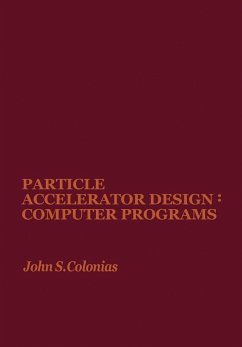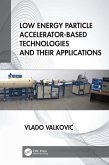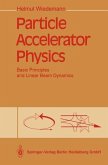Particle Accelerator Design: Computer Programs describes some of the most important computer programs applicable to the design of particle accelerators. Computer programs that calculate magnetic and electric fields are considered, along with programs that calculate orbits of particles in a magnetic and/or electric field. Some representative programs useful in the design of linear accelerator-type cavities are also discussed.
This book is comprised of six chapters and begins with a review of two-dimensional magnetostatic programs, including TRIM, LINDA, NUTCRACKER, MAREC, GRACY, and COILS. The University of Colorado's magnet program is also examined. The next chapter is devoted to programs capable of solving problems relating to the calculation of electrostatic fields in two-dimensional geometries. The reader is also introduced to programs that perform calculations of three-dimensional linear and nonlinear problems, along with programs that employ matrix formalism and integration of equations of motion. The final chapter looks at programs for linear accelerator-type cavities, including CURE, JESSY, MESSYMESH, and AZTEC.
This monograph will be a useful resource for physical scientists, engineers, and computer programmers.
This book is comprised of six chapters and begins with a review of two-dimensional magnetostatic programs, including TRIM, LINDA, NUTCRACKER, MAREC, GRACY, and COILS. The University of Colorado's magnet program is also examined. The next chapter is devoted to programs capable of solving problems relating to the calculation of electrostatic fields in two-dimensional geometries. The reader is also introduced to programs that perform calculations of three-dimensional linear and nonlinear problems, along with programs that employ matrix formalism and integration of equations of motion. The final chapter looks at programs for linear accelerator-type cavities, including CURE, JESSY, MESSYMESH, and AZTEC.
This monograph will be a useful resource for physical scientists, engineers, and computer programmers.
Dieser Download kann aus rechtlichen Gründen nur mit Rechnungsadresse in A, B, BG, CY, CZ, D, DK, EW, E, FIN, F, GR, HR, H, IRL, I, LT, L, LR, M, NL, PL, P, R, S, SLO, SK ausgeliefert werden.









